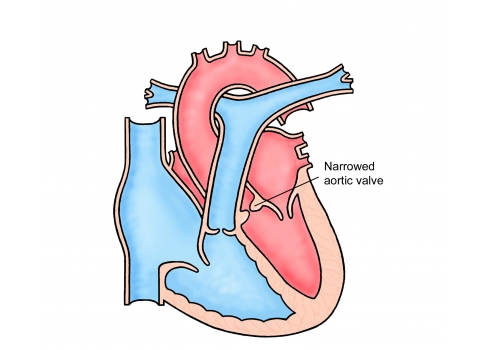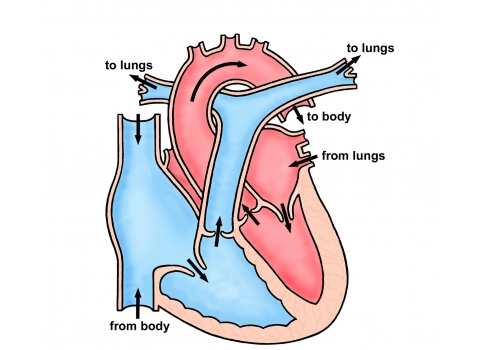Adult
- About
- Meet The Team
- Conditions
- Anticoagulation in Pregnancy
- Aortic Dilatation and Pregnancy
- Aortic Valve Disease
- Aortic Valve Replacement
- Atrial Septal Defect
- Coarctation - Transcatheter stent (keyhole) treatment
- Coarctation of the Aorta
- Congenitally Corrected Transposition of the Great Arteries
- Ebsteins Anomaly
- Eisenmenger’s Syndrome
- Fontan Circulation
- Mitral Valve Repair/Replacement
- Normal Heart
- Patent Foramen Ovale
- Pregnancy information for women with metal heart valves
- Pulmonary Incompetence
- Pulmonary Stenosis
- Pulmonary Valve Replacement - Surgery
- Pulmonary valve replacement - Transcatheter (keyhole) treatment
- Repaired Atrioventricular Septal Defects
- Sub-aortic Stenosis
- Surgical treatment of Atrial Septal Defect
- Tetralogy of Fallot
- Transposition of the Great Arteries - The Atrial Switch (Mustard or Senning) procedure
- Transposition of the Great Arteries – Arterial Switch
- Ventricular Septal Defect
- Ventricular Septal Defect - Transcatheter (keyhole) treatment
- Patient Feedback
- Making the most of your clinic appointment
- Your Appointment in Outpatients
- Easy Read Guide for Out Patients
- Cardiac Catheter
- Transoesophageal Echocardiogram
- MRI
- Surgery & "Top Tips" for coming into hospital
- Lifestyle Advice
- Exercise
- Heart Failure
- End of Life and Palliative Care
- Looking after your oral health
- Dentists Information Section: Dental care in adults at risk of Infective Endocarditis
- Yorkshire Regional Genetic Service
- Support
- Video Diaries
- Second Opinion
- Monitoring Results at Leeds Infirmary
- Professionals
Aortic Valve Disease
The aortic valve is one of the main valves in the heart. It is there to ensure that red blood (containing oxygen) passes in the right direction from the main pumping chamber (the left ventricle) to the main blood vessel (the aorta) and out to the rest of the body. The valve closes after every heart beat so blood that should be going to the body doesn’t leak back into the pumping chamber (left ventricle).
In aortic valve disease there is an abnormality of the aortic valve which means it doesn’t work properly. The aortic valve can be narrowed in which case it won’t open properly (aortic stenosis) or it may not close properly and leak blood backwards into the main pumping chamber (aortic regurgitation). In some cases the valve may be both narrowed and leaky in which case the problem can be described as “mixed” aortic valve disease.


Aortic stenosis (narrowing)
In aortic stenosis the leaflets are either thickened or stuck together.
Treatment for aortic stenosis (narrowing): In a severely narrowed valve, pressure can build up in the main pumping chamber (left ventricle) which can eventually lead to permanent damage. When this happens the valve must be opened up. There are two ways this can be done.
1) In some narrowed aortic valves (but not all) it is possible to stretch open the valve with a balloon in a keyhole procedure called a “cardiac catheter”. Although this procedure can be effective at reducing the pressure on the pumping chamber it does not repair the valve and so eventually nearly all valves treated this way will need replacing.
2) An aortic valve can be replaced in open heart surgery. There are 2 different types of valve that can be used with each type having its advantages and disadvantages which you need to discuss with your cardiologist.
The Ross Procedure
One option for surgery is to use an animal or human tissue valve. This is called the Ross Procedure. The pulmonary valve replaces the narrowed aortic valve, then a ‘tissue valve’ (usually from a pig, or a human valve) is used to replace the pulmonary valve
Aortic regurgitation (leak)
A leaky aortic valve makes the pumping chamber of the heart work harder than normal. When the leak is severe the valve needs replacing with open heart surgery. As above, there are 2 different types of valve that can be used with each type having its advantages and disadvantages which you need to discuss with your cardiologist.
Bicuspid aortic valve
About 2% of people have aortic valves that have 2 leaflets rather than the usual 3. These valves can function very well throughout life but do have a tendency to narrow and/or leak as people get older. As well as an abnormality with the valve, people with bicuspid aortic valves frequently have an abnormality with the main blood vessel (aorta) leaving the heart too. It may stretch (dilate) with the risk of a tear once it gets beyond a certain size or it may have a narrowing (coarctation). Your cardiologist will monitor this by scanning your valve and the aorta.
Other issues
1) Ongoing care: Young adult patients who were born with a heart problem are usually best cared for in a unit specialising in the care of this patient group (congenital cardiology). You will be monitored regularly, have heart scans (echo’s) and ECG’s and possibly other tests if you cardiologist thinks it is necessary
2) Exercise: Regular exercise, to a moderate level, is encouraged. It is good for overall health and can also help to keep blood pressure lower / under control. Activities such as walking, cycling, and swimming are ideal and it is important to warm up and warm down slowly. Unless the valve is only slightly narrowed it is often best to avoid really intense cardiovascular exercise, for example long distance running or sudden ‘bursts’ of strenuous activity (squash and sprinting for example); it is best to avoid power/weight lifting too. If you are not sure whether any sport/activity is okay for you to do, please ask the adult congenital heart disease team caring for you for advice.
3) Endocarditis: All patients with aortic valve disease are at risk of infection in the heart (endocarditis). It is important that you have good dental hygiene and you visit the dentist every 6-12 months. You no longer require antibiotics prior to dental treatment. Due to the increased risk of infection we would advise against body piercing and tattoos.
4) Pregnancy: Although pregnancy can be a risk in patients with severe aortic valve narrowing, patients with milder narrowing or leak usually cope very well. There are many issues relating to pregnancy for patients with aortic valve problems and it is VERY IMPORTANT you discuss things with your cardiologist before deciding to start a family.
